“For me, watercolor is the best medium for expressing my deepest feelings about the beauties of nature and scenes I see everyday,” says Jonathan Kwegyir Aggrey. “I vary my application of the medium depending on the subject at hand — from loose washes to very fine details or a combination of lost and found edges. I allow my creativity to flow throughout the working process without restricting myself strictly to what I see in any reference materials, whether I’m working from life, a photo, or my imagination.
“I usually start my watercolor painting by first laying broad washes of colors using wet-into-wet techniques. I keep dropping in colors while the initial washes settle to dry and also pay close attention to the white areas, as I want to leave the paper untouched where I want to place my highlights. I use drybrush techniques to finish the painting.”
Watercolor Tutorial: Establishing a Focal Point
By Jonathan Kwegyir Aggrey
Step 1
For this demonstration, I chose arches 140-lb. cold pressed paper. The drawing was outlined using a 3B pencil. I then laid a wash of cobalt blue with light neutral colors, leaving patches of the paper untouched for my white spaces.
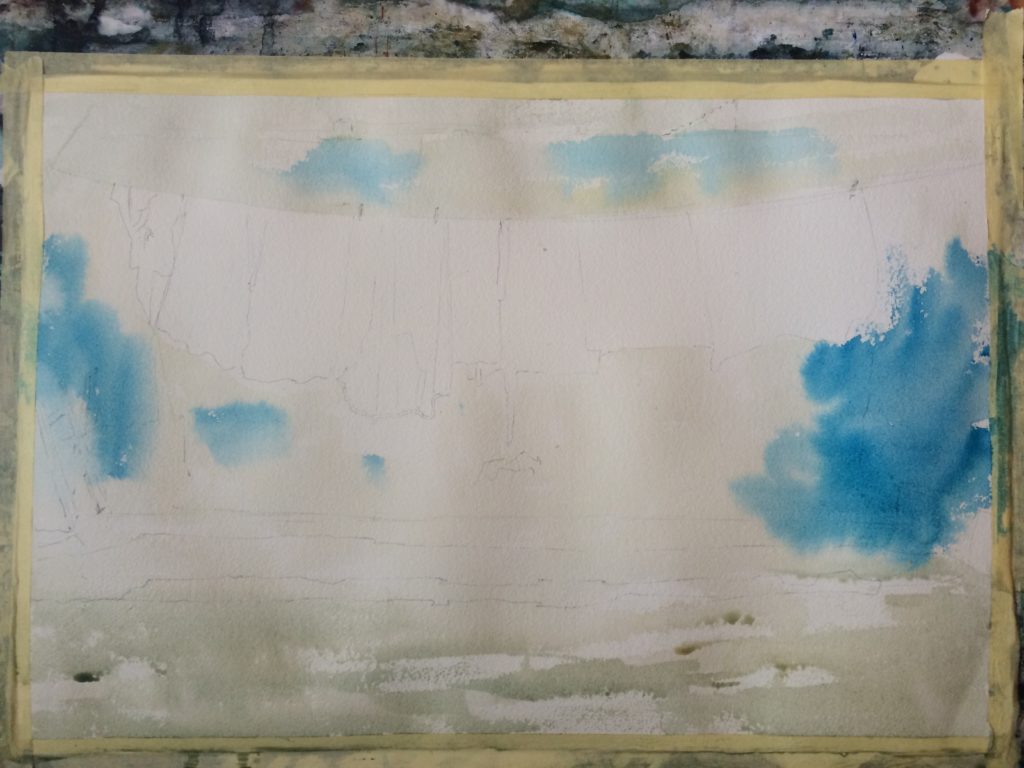
Step 2
I started to increase the tones to build on the color structures of the walls, leaving the focal point untouched.
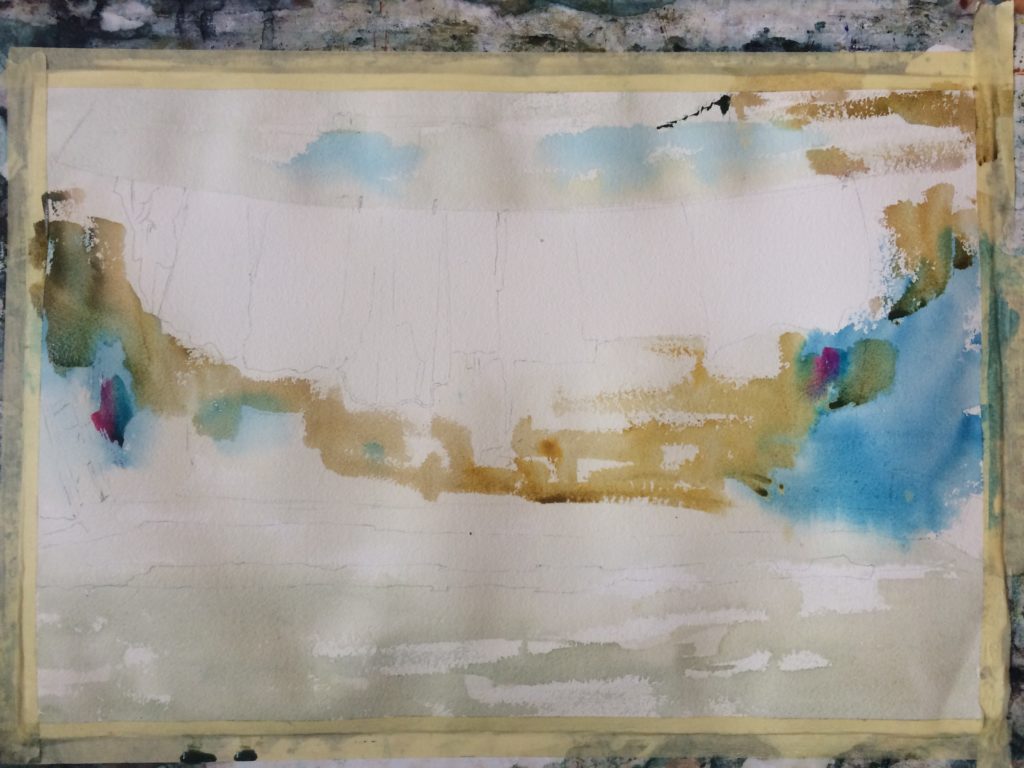
Step 3
I kept building on the color tones and adding some darks to the blue area before the initial colors dried completely.
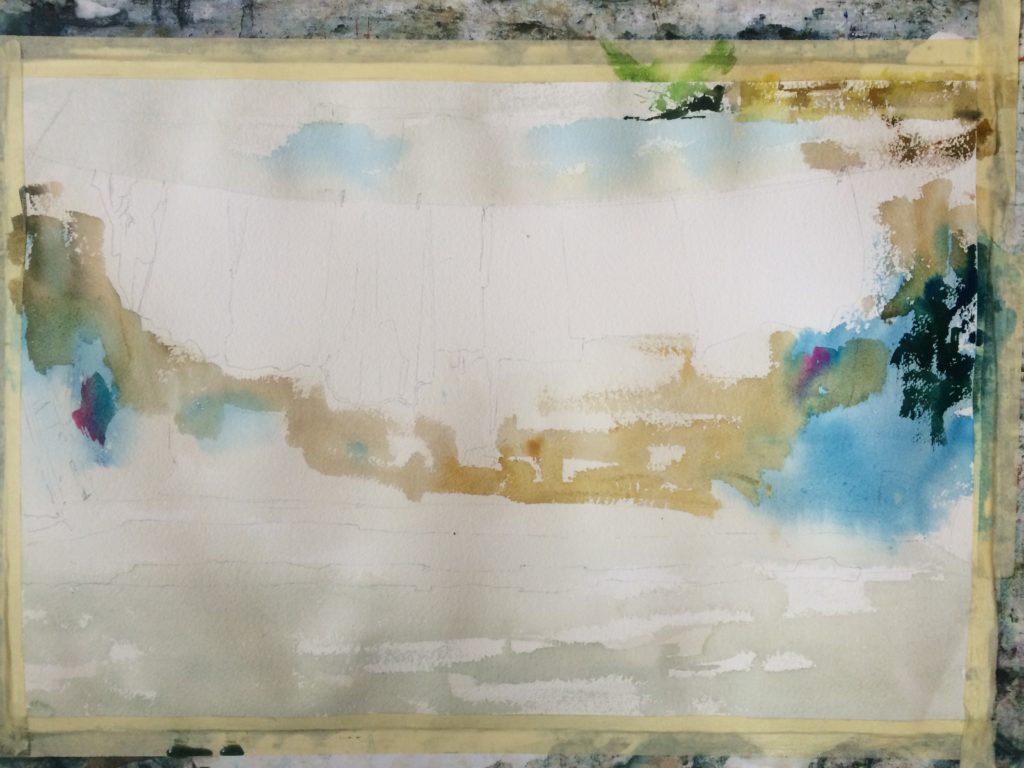
Step 4
At this stage, I worked simultaneously to bring out some of the detail structures in the work.

Step 5
I continue to bring out details as the painting takes shape.

Step 6
I started to indicate the shadows to create distinction between the light areas and dark areas of the painting.
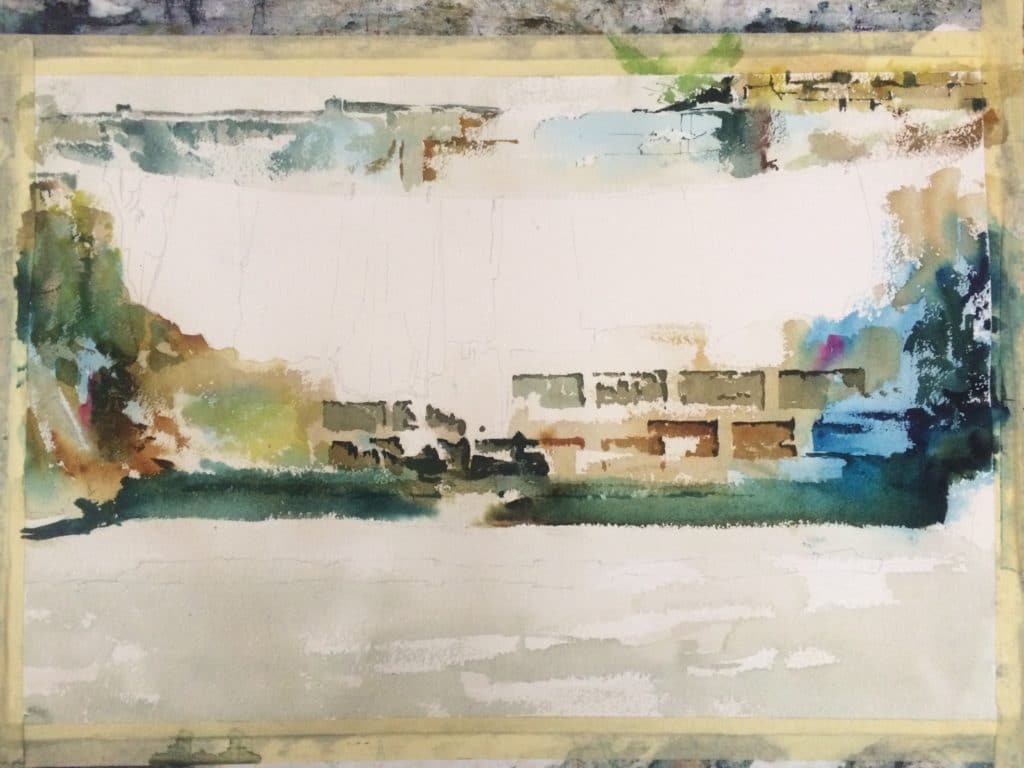
Step 7
I carefully laid in the first washes of the focal point, which is the clothes hanging on the line, while having in mind the red shirt in particular as the spot I wanted to grab and hold the viewer’s eye within the painting.
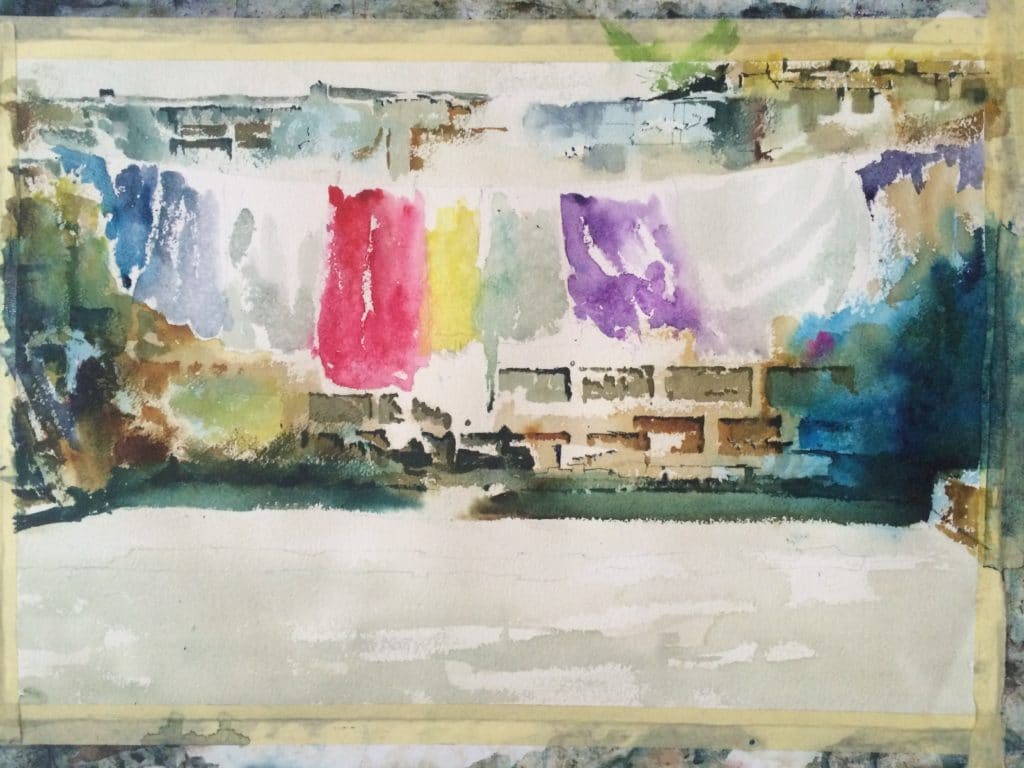
Step 8
At this point, I worked simultaneously around the focal point areas (clothes) and the background (wall) to tie the painting together while increasing the tonal intensity.

Step 9
At this final stage, I darkened the foreground with shadows, using bold washes to help create depth and to increase the light and shade intensity. I used a small brush to pick out small details to finish the work.
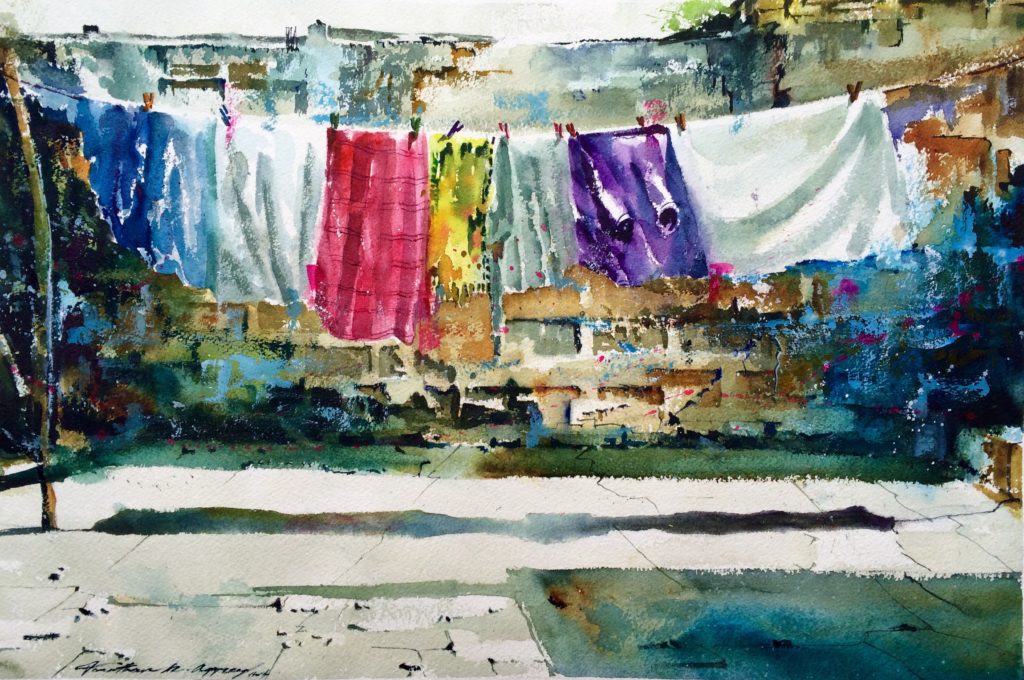
Jonathan K. Aggrey knew that he wanted to be an artist when he was about five years old. He studied and worked as a part-time roadside artist from 1995 to 2003. After completing secondary school, he moved to Accra to stay with his uncle, Mr. R. Acquaah-Harrision who mentored him, and later studied under a professional painter, Mr. E. Yaw Mensah of Freehand Studio. He holds a Bachelors degree in Art Education (Bachelor of Arts) from the University of Education, Winneba, Ghana. Jonathan has had the privilege of exhibiting in group and solo exhibitions in several countries including Ghana, Turkey, Romania, China, Thailand, Colombia, Nigeria, Italy, France, Norway, Korea, and Russia. He has also appeared in several major international catalogues and publications around the world. His collectors include Qingdao Art Museum, China and numerous art collectors around the world. He won a ‘Young Icon’ award in the Osagyefo Dr. Kwame Nkrumah African Genius Awards, 2014. He also won ‘Golden Brush’ award in Gaziantep, Turkey 2017 and other awards.
For more inspiring stories like this one, sign up for our free weekly e-newsletter.


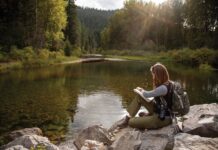





Great newsletter! I have foud the step-by-step tutorials and the details described by the artists to be valuable and inspiring. Thank you!
Thank you so much.There are lots of useful information that I picked up from this newsletter!
Very inspiring!
Thank you for the tutorial. It’s very helpful to a beginning painter like myself. I look forward to the newsletter because I learn so much.
I just signed up for this newsletter. I can tell I am going to get so much information from it.
Very informative newsletter! Thanks for providing ideas, tips, and inspiration!
Many thanks to you all for finding my step by step article very useful and inspiring. Get in touch for more helpful tips and info.